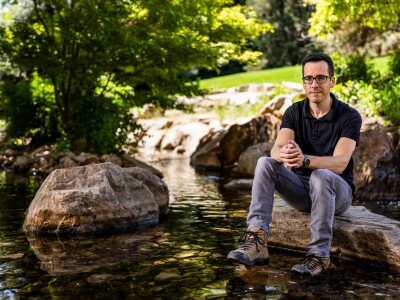Although it may seem difficult for adults to understand what an infant is feeling, a new study from Brigham Young University finds that it’s so easy a baby could do it.
Psychology professor Ross Flom’s study, published in the academic journal Infancy
“Newborns can’t verbalize to their mom or dad that they are hungry or tired, so the first way they communicate is through affect or emotion,” says Flom. “Thus it is not surprising that in early development, infants learn to discriminate changes in affect.”
Infants can match emotion in adults at seven months and familiar adults at six months. In order to test infant’s perception of their peer’s emotions, Flom and his team of researchers tested a baby’s ability to match emotional infant vocalizations with a paired infant facial expression.
“We found that 5 month old infants can match their peer’s positive and negative vocalizations with the appropriate facial expression,” says Flom. “This is the first study to show a matching ability with an infant this young. They are exposed to affect in a peer’s voice and face which is likely more familiar to them because it’s how they themselves convey or communicate positive and negative emotions.”
In the study, infants were seated in front of two monitors. One of the monitors displayed video of a happy, smiling baby while the other monitor displayed video of a second sad, frowning baby. When audio was played of a third happy baby, the infant participating in the study looked longer to the video of the baby with positive facial expressions. The infant also was able to match negative vocalizations with video of the sad frowning baby. The audio recordings were from a third baby and not in sync with the lip movements of the babies in either video.
“These findings add to our understanding of early infant development by reiterating the fact that babies are highly sensitive to and comprehend some level of emotion,” says Flom. “Babies learn more in their first 2 1/2 years of life than they do the rest of their lifespan, making it critical to examine how and what young infants learn and how this helps them learn other things.”
Flom co-authored the study of 40 infants from Utah and Florida with Professor Lorraine Bahrick from Florida International University.
Flom’s next step in studying infant perception is to run the experiments with a twist: test whether babies could do this at even younger ages if instead they were watching and hearing clips of themselves.
And while the talking twin babies in this popular YouTube clip are older, it's still a lot of fun to watch them babble at each other.
Writer: Brett K. Lee








